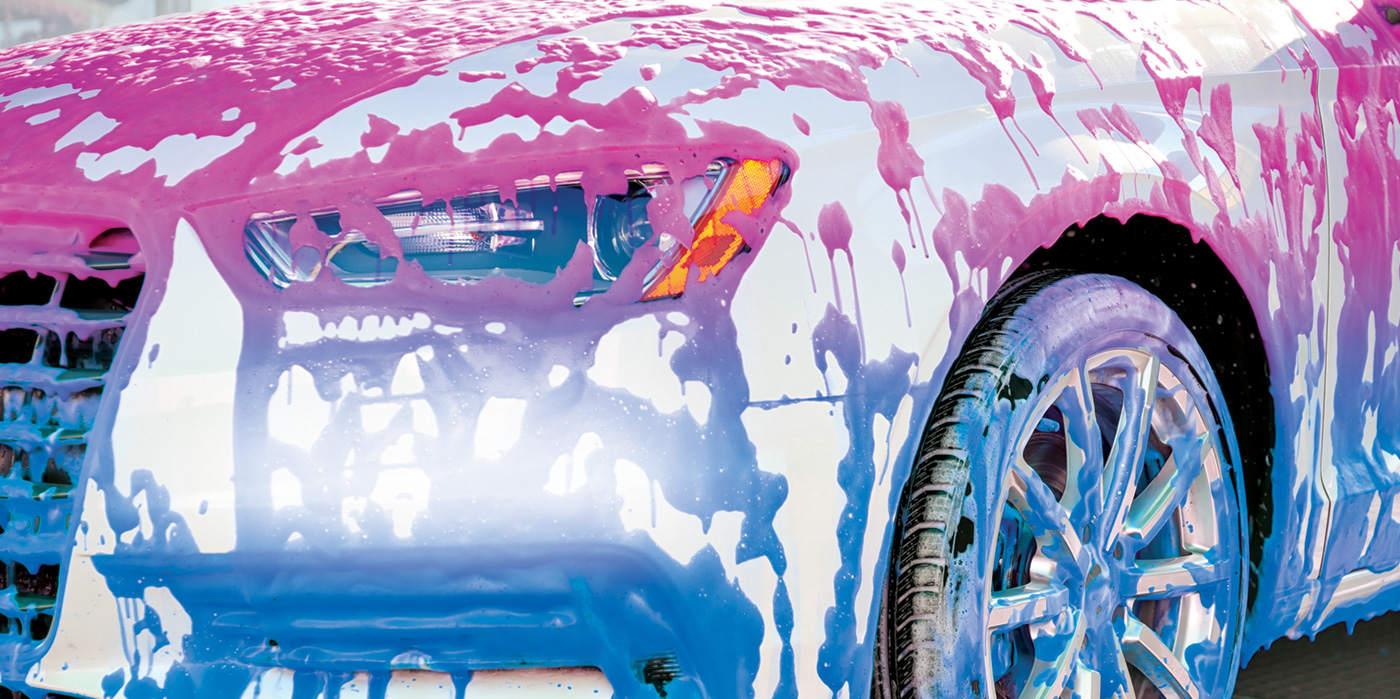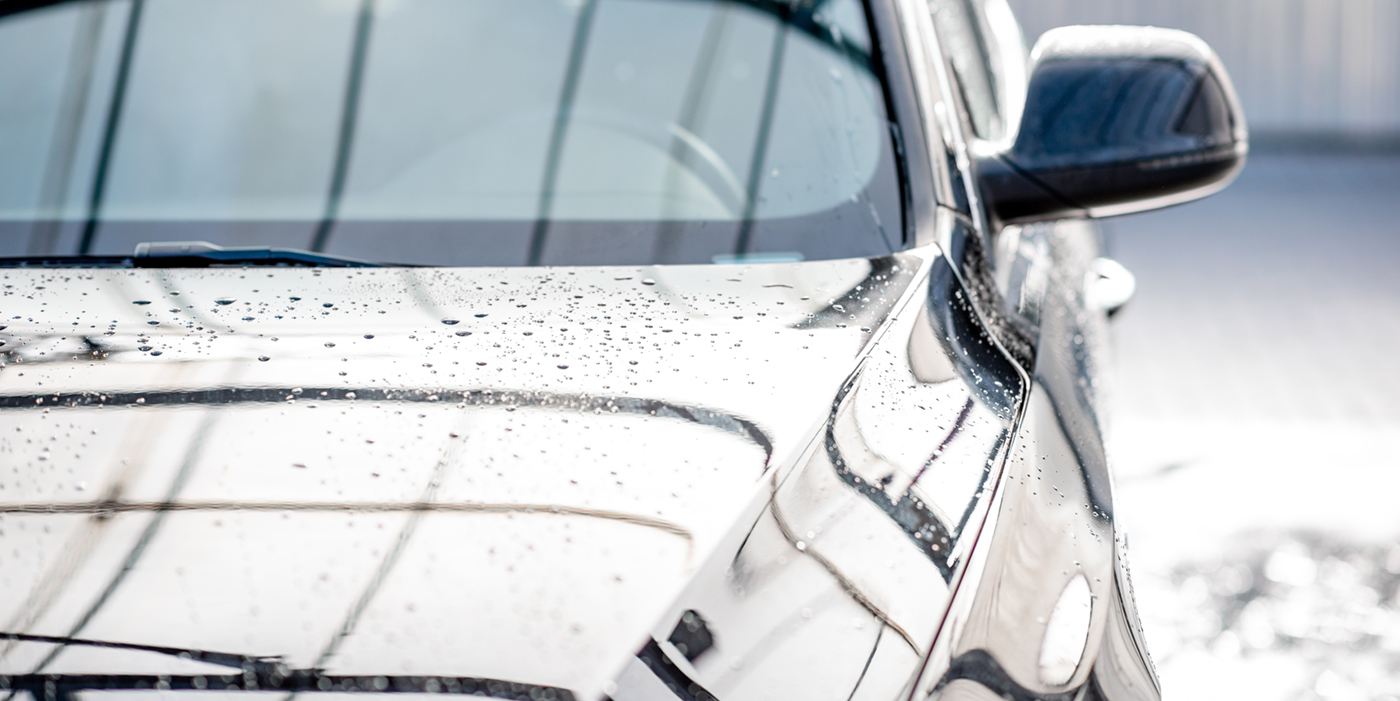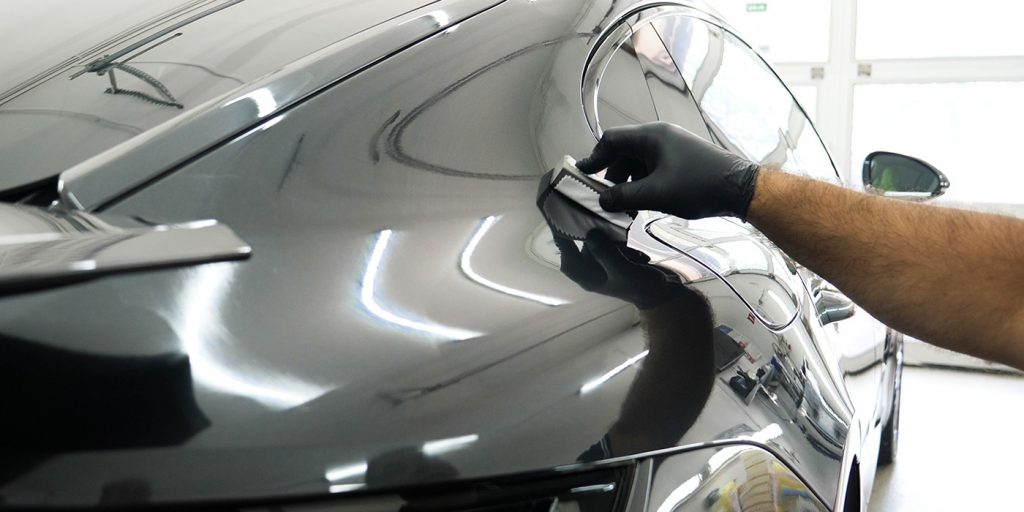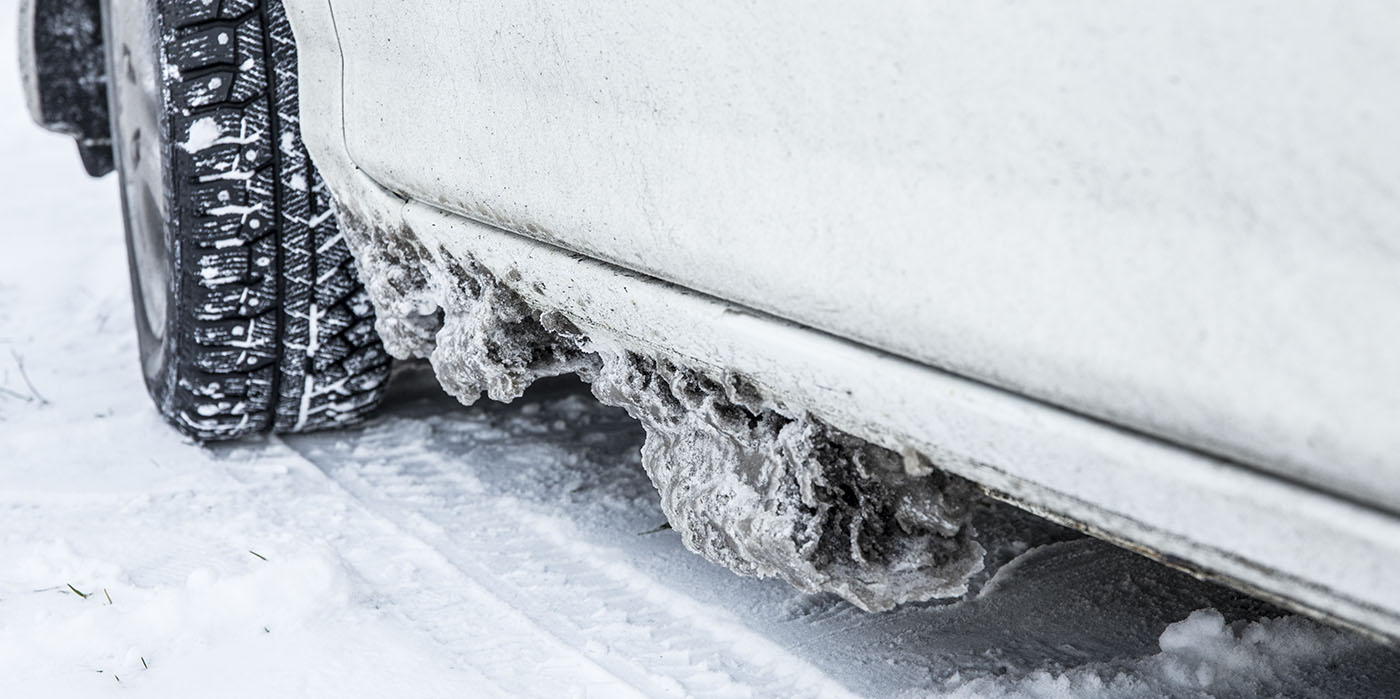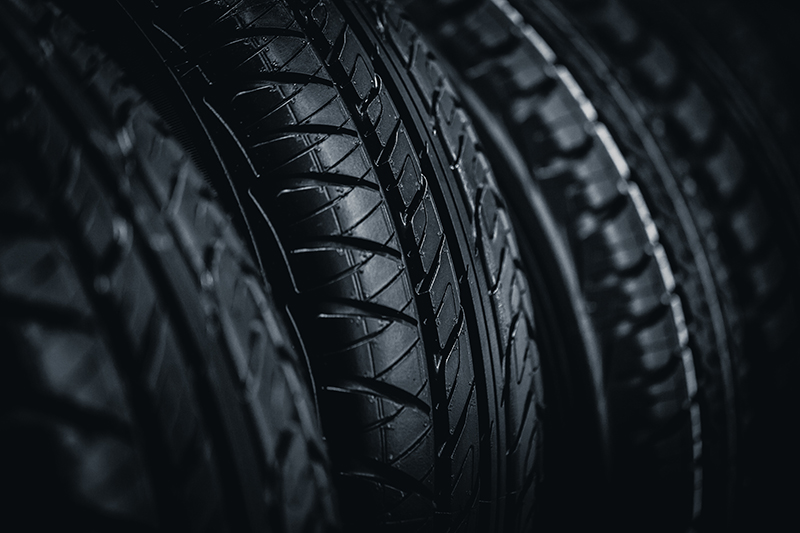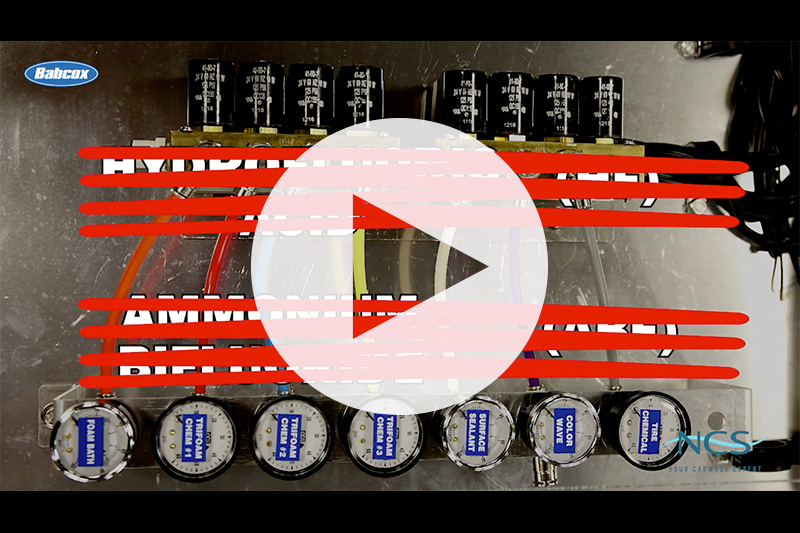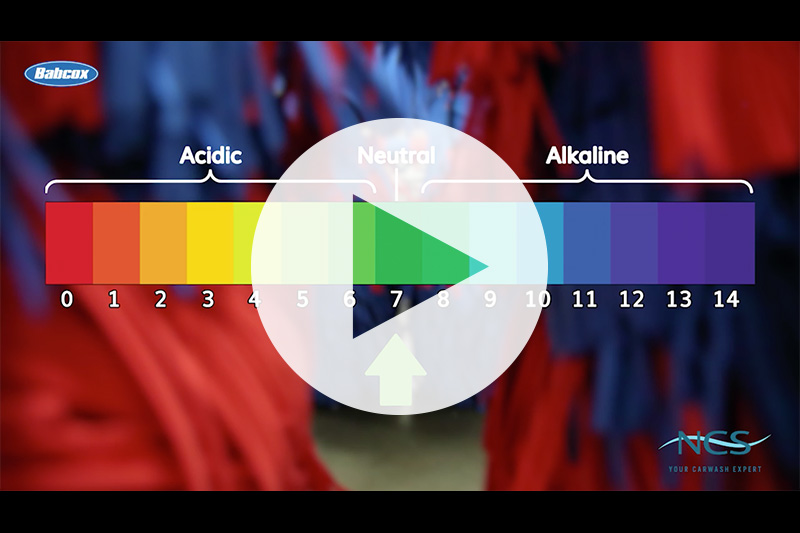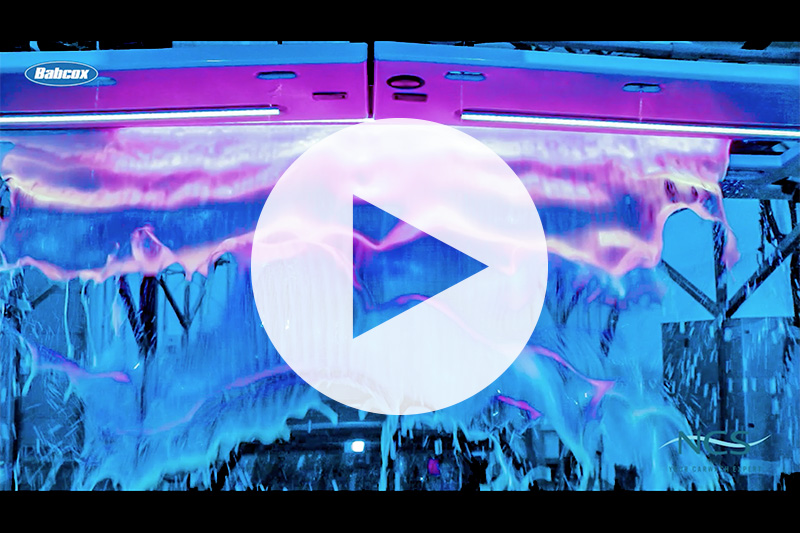In recent years, proactive carwash owners and operators who are vested in their businesses and make the needed investments to create loyalty among customers have turned to show elements that are being provided by the industry’s top manufacturers and suppliers. Advancements in LED lighting, signage, equipment and materials have all created a more effective, safer and quieter carwash while limiting some of the concerns customers have about patronizing a professional carwash business. One area of significant advancement in recent years has been in foaming products and applicators.
In this article, we discuss these advancements and their benefits to both operators and customers with some leading experts in the field.
Foam’s place in the wash
At a standard wash, rinse water and chemicals are applied in stages, or cycles. In a previous article in Professional Carwashing & Detailing, titled “Is triple foam right for your wash?” author Tom Meinert breaks down a typical cycle example found in touch-free washing that involves using tri-foam as follows:
- Step one: wheel wash (high pressure): High-pressure water will knock off the heavy dirt.
- Step two: low pH presoak (low pressure): Low pH presoak will attack and break down the first layer of film on the vehicle and also clean the glass and chrome.
- Step three: high pH presoak (low pressure): High pH presoak will do the bulk of the cleaning on the painted surfaces and positively react with the low pH presoak to continue cleaning.
- Step four: tri-foam (conditioner/cleaner or conditioner/cleaner-plus): Tri-foam with cleaners and additives will allow the presoak to continue to work (dwell time). As the presoak is cleaning, the chemicals in the triple foam are also doing their job by breaking down the bugs or cleaning the glass while providing a shine.
- Step five: high-pressure soap (neutral pH): The neutral pH high pressure helps to bring down the pH of the car after the high pH presoak cycle. Lowering the vehicle’s pH chemically helps the wax be more effective.
- Step six: high-pressure rinse: The rinse removes any soap left on the vehicle.
- Step seven: high- (or low-) pressure wax/clear-coat protectant: The wax/clear-coat cycle helps protect the car and also aides in the drying of the vehicle.
- Step eight: spot-free rinse: Going directly into the spot-free cycle from the wax cycle (without a rinse) is effective for several reasons.
You can read Meinert’s entire article here.
In addition to its cleaning benefits, colored foam is also being used around the country for its entertainment and value-added benefits.
According to Steve Kelly, who is the bubble maker/customer success specialist at Kleen-Rite Corp., there are three significant benefits that foam offers operators when applied to a wash process across all carwash formats. These benefits, says Kelly, include:
- Foam enhances the visual appearance and value for customers.
- When applied correctly, foamy soaps offer easy sliding across a customer’s vehicle surface (lubricity).
- Foam gives the operator an opportunity to create an enhanced customer experience with products by offering different colors and scents, which is extremely important in self-serve operations.
And, adds Ken Bucher, CEO of Warsaw Chemical, the benefits of offering foam applications at a professional carwash do not stop there.
“Foam adheres to the vehicle surface for longer dwell time, enhancing cleaning and shine,” educates Bucher. “Foaming applications also lower the amount of water and chemical used, resulting in a lower cost per car.”
Foam in a leading role
Foaming application systems have helped successful operators increase the show performance of their carwashes while also reducing water and chemical demands. Operators must invest in the top systems and products on the market today and then fine-tune systems and select the right products to produce the perfect foam at their specific washes. Each carwash and customer base is different, and a themed carwash might be able to incorporate specific ways to work a foam show into the overall concept. Working with leading industry manufacturers, consultants and distributors will help fine-tune the perfect foam show at your carwash.
But, generally, what makes for a great foam show experience?
For the conveyor segment, Robert Andre, who is the vice president of customer success for Sonny’s Enterprises, offers the following five general factors that make for a great foam show:
- Attractive lighting: Advanced LED lighting that illuminates and enhances the foam.
- Application: This includes how and where foam is applied during the cleaning process. “For instance, starting at the beginning with a nice, thick sheet of foam,” suggests Andre.
- Colors: When it comes to these applications, customers like to see different colored foam being applied.
- Scents: Incorporate fragrances, and appeal to customers’ other senses.
- Changes in foam: Applying foaming products at different stages will maximize the impact of the show experience.
“Today, we have more options when applying foam compared to previous years,” adds Andre. “There are many different types of applications on the market; we’re able to change up the appearance of the foam, which gives customers a totally different experience. So, not only are the colors changing, but the way the foam is being applied to the car is also different, and that turns into a really cool experience for the customers.”
There are now a variety of products and applications available in the professional carwash industry. However, astute operators know that not all of these products work effectively, requiring more resources to achieve acceptable wash results. Leading, quality soaps, conditioners and waxes as well as applicators on the market today will help operators achieve savings while increasing profits and customer loyalty.
Related: Carwash chemicals 101
According to Bucher, in order to create a great foam show at your carwash, operators must ensure that the chemicals they select are designed to work in a foaming application system. This determination can be made with the advice from a reputable manufacturer or distributor.
“Carwashes must also utilize proper foam generators,” adds Bucher. “Remember, high-foaming products must offer a good rinse easily and quickly, and provide good coverage of the entire vehicle.”
As mentioned, leading products offered by trusted manufacturers will exhibit appropriate foam levels when combined with newer application systems. These products will produce the visual effects of foam while offering free rinsing capabilities.
According to Kelly, powdered soaps generally do not show much visible foam. “It is common for some of our customers to include some foam additive in their systems to increase foam,” he says. “Some operators can also install foam generators to increase foam levels. The goal here is to offer good visual appearance but also be able to completely rinse the foam off of the vehicle.”
Smoother overall experience
An important carwash function of foam applications is the level of lubrication that it offers. Proper lubrication has several benefits in the overall carwash process, including minimizing damage and lowering noise levels. These are two very important elements when looking to create loyalty and elevate the customer experience at your carwash.
Creating lubrication is what Andre calls a “big purpose” of the foam, in addition to creating a show for customers. Customers checking their cars after the wash is over can be a real showstopper. Loud noises can lead customers to close inspections of exterior surfaces, which often leads to other things being noticed, such as small scratches, dents and loose molding and trim. In other words, noise can escalate customer issues fast at your site — whether your carwash is at fault or not — and proper lubrication is a solution to avoid these situations.
“Providing that level of lubrication with foam has several benefits. First, the equipment itself, regardless of the materials you’re using, will have less friction with the car throughout the process with a proper amount of lubrication,” says Andre, adding that having less friction present results in less wear and tear on equipment and materials. “Therefore, not only are operators able to reduce damage claims, but they’re also able to extend the life of their equipment and materials.”
Additionally, continues Andre, the right amount of lubricity, regardless of brush speed, is also going to greatly reduce noise.
Bay opportunities with foam
Foam applications are helping operators provide a value statement to customers while also increasing a wash’s ticket averages. Experts agree that customers love foam and will pay more for it. This presents a win-win for customers and operators, regardless of wash format. There are specific opportunities at self-serve and in-bay automatic (IBA) carwashes.
According to Bucher, the opportunities associated with applying foam shows at these wash formats are as follows:
- Foam brushes are lubricated with chemical, which then lubricate the vehicle surface. This allows the brush to safely glide over the vehicle, preventing streaking and scratching.
- Low-pressure foaming presoak and bug cleaner products adhere to vehicle surfaces for a longer dwell time, creating better cleaning.
- Foaming tire cleaner clings to tires for longer dwell time and will not run off with cleaning.
- Tri-color foaming clear-coat polish provides a unique customer experience while protecting the vehicle surface and providing shine.
And, similar to conveyor tunnel customers, self-serve and IBA customers are attracted to foam applications and appreciate the value they provide. Drawing from his own personal experience previously owning a self-serve location, Andre confirms that customers loved using his wash’s triple foam gun so much that they would often apply more than needed just because they enjoyed the experience.
“My customers loved using a lot of foam. And, it took them longer to rinse it off, which increased their time in my bay. For self-serve operators, give customers more foam instead of less,” advises Andre.
For the IBA segment, Andre notes that traditionally there have been some challenges among systems to properly rinse foam after applying. However, he adds, there are some products being offered today, specifically some aftermarket applicators, that are helping IBA operators mimic some of the thicker sheets of foam often seen in tunnels, using less product so it’s easier to rinse off.
Water and maintenance in supporting roles
As many carwashes learn — sometimes the hard way — equipment malfunction and poor water quality can bring profits to a screeching halt. The importance of water quality and properly functioning equipment simply cannot be overstated.
Hard water, which contains dissolved magnesium and calcium ions, makes it more difficult to form a lather with carwash soaps and detergents. Over time, hard water also creates scale buildup, potentially affecting the performance of nozzles and sprayers. In terms of the best water to use in foaming applications, the experts note that fresh, soft water is best.
“Reclaim water could be used, but it is not ideal. Fresh, soft water is ideal,” says Bucher. “Check for odor and water hardness. Generally, if water is harder than 20 grains, or 400 parts per million (ppm), it will actually kill the foam.”
Additionally, reclaimed water often has higher levels of total dissolved solids (TDS), which can impact the creation and application of foam. Soft water also reduces the amount of chemical needed to adequately clean a car, thus resulting in chemical and energy savings.
“Water quality is definitely something a lot of operators take for granted,” suggests Andre. “Test your water regularly, such as every six months or less, to make sure its softness, pH and TDS levels are where they need to be.”
While today’s application systems are better, it does not mean they are maintenance-free. Similar to all carwash systems, operators must maintain a regular preventive maintenance routine on foaming applicators to ensure they are working as intended. After all, a good foam show can add to a positive visit, while a poor foam show can create a negative impact.
In Kelly’s experience, when servicing operators who complained about “no foam,” citing bad soap, he notes mechanical problems were the source of the issue, preventing the free flow of detergent.
“I’ve heard of clogged ‘mushroom’ filters; clogged water-feed screens on hydrominders; hydrominders not functioning properly; faulty solenoids; needle valves that vibrated closed; and obstructions in hoses. Once those conditions are corrected, foam returns,” assures Kelly.
Captivating the audience
Although the answer to the next question might not matter to carwash operators who currently benefit from the selling power of foam and hope the bubble doesn’t burst, it’s an important query nonetheless. Why are customers so fascinated with foam?
Kelly believes that the popularity of foam is a result of customers associating foam with cleanliness and protection. When combined with a fresh scent and flashing LED lights, as mentioned, customers also associate foam with value.
Andre notes that our society is becoming more visual with the adoption of colorful, flashy smartphones and apps, drawing attention to such features as colorful foam. He also adds that the customer base is getting younger and was raised on what he calls “Disney experiences,” meaning they appreciate visually stimulating effects, including with services.
However, Bucher’s conclusion is likely to be the most appetizing to operators. “It’s the ‘sizzle that sells the steak,’” he proclaims. As a result, operators should dig in to profits with foam and make sure customer visits aren’t bland or rare. Manufacturers are hard at work continuing to modify current systems that will lead to new breeds of applications and products, and therefore, foam will continue to be a cash cow for your business moving forward.



